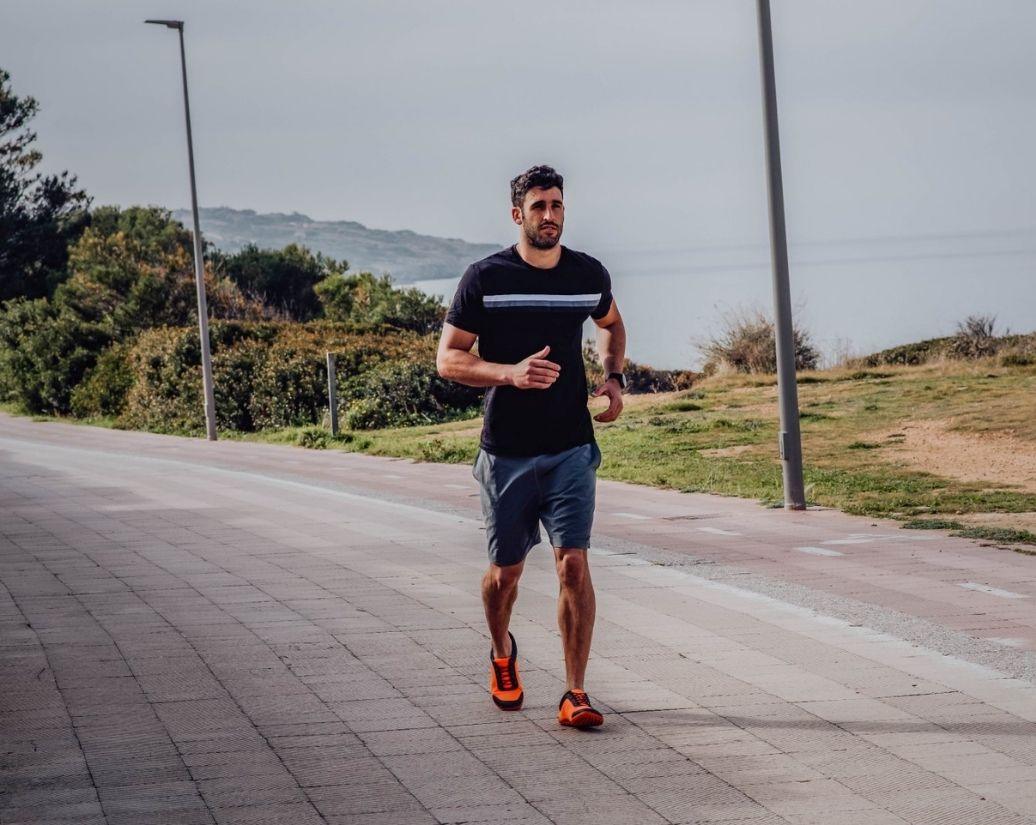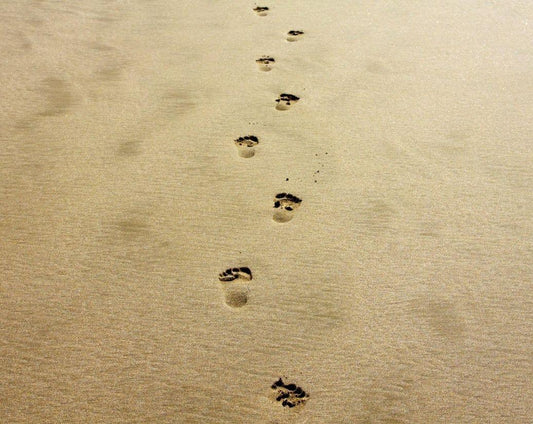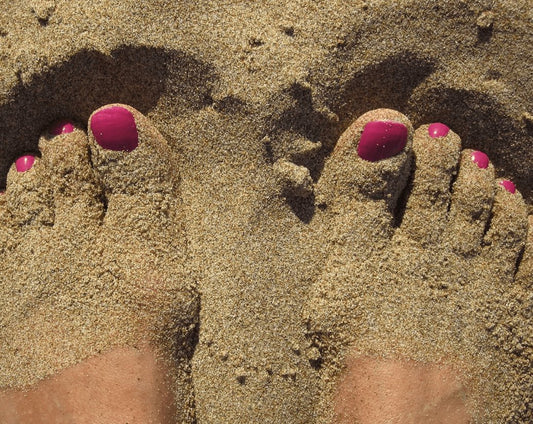Barefoot running or running in barefoot shoes?

Barefoot running might sound crazy at first and is often categorized as something for hippies and dropouts. However, few people consider that we were born barefoot. Before modern high-tech footwear was invented, we walked, ran, and jumped barefoot or with improvised minimal shoes.
Why Barefoot Running at All
Many turn to barefoot running because they feel increasingly severe joint problems when running. Often, visits to the doctor, even to specialists, lead to little improvement. An injection to relieve pain and the advice to stop running to protect the joints are common practices. For athletes who need running as a balance, this can be quite frustrating.
This raises the question of why the human species develops such joint problems over the course of their lives, which do not occur at all in the animal world. What are we doing differently or even wrong? Quite simply, we wear shoes that alter our natural movement pattern.
Running Shoes Can Cause Joint Problems
Modern running shoes are designed to be slightly higher in the heel area and have high cushioning. This leads most wearers to land on their heels when running, and the steps become significantly longer overall. The hard landing of the foot via the heel leads to a strong shockwave that travels through the entire body and eventually becomes noticeable in the joints. Although the strong cushioning properties of running shoes somewhat absorb the strong shock, the joints are still stressed with every step.
What Happens During Barefoot Running?
The movement is intuitively adjusted during barefoot running. After the first steps, which are often still executed as usual, the movement is quickly adjusted. Landing on the heel is much too hard and shocks the entire body. Without thinking about it, the step is adjusted to avoid the uncomfortable, hard landing of the foot. Automatically, the foot is placed more on the ball to cushion the step. As a result, the steps become significantly shorter than when wearing running shoes.
Unfortunately, we stop the development of foot muscles in toddlers nowadays by putting them in shoes. When you run barefoot, your whole foot works. This results in building muscles, and your feet thus become significantly larger or wider. Where muscles are needed and regularly trained, they also develop.
In addition to muscle growth in the foot area, you have another positive effect through the many nerve pathways that end in the foot. The sensors in your feet perceive the impulses of the ground and transmit them to the brain. This can initially be unfamiliar or perhaps even a bit overwhelming. Ultimately, this so-called sensory feedback is extremely important because it protects us from injuries. The movement is intuitively adjusted lightning-fast when it becomes prickly, slippery, sandy, or rocky. The interaction of sensory feedback and strong muscles and ligaments ensures that every run is absolutely stable and safe.
Animals in the wild can flee at lightning speed when they feel in danger. Even in escape mode, the movement is always safe and controlled. This would no longer work if something were tied to their hooves or paws, as the sensory feedback would be completely lost.

Switching to Barefoot Running
As mentioned above, it is usually the case that when barefoot running, the foot lands more on the ball than on the heel. This avoids the unpleasant strong shock that quickly leads to joint pain. However, for many, not only the foot has changed due to the constant wearing of shoes, but the entire gait pattern.
For most people, the transition to barefoot running works quite well after a certain adjustment period. Others complain of pain and return to their conventional sports shoes. If you feel pain in joints and ligaments after running training, it is always a sign of overstrain. This can have two causes:
1. Your movement sequence is correct, but your muscles, tendons, and ligaments are not yet accustomed to barefoot running.
2. Your running style is not optimal and thus damages your muscles, tendons, and ligaments.
Since you probably find it difficult to assess whether you have an optimal running style, it is advisable to consult a barefoot coach. They specialize in analyzing and correcting your posture. With the support of a special coach for barefoot running, you can be sure to develop a healthy and natural running style.

Barefoot Running with Barefoot Shoes
Barefoot shoes or minimalist shoes are the golden mean between wearing special running shoes and natural barefoot running without footwear. Our ZAQQ barefoot shoes are designed so that your foot muscles can work optimally. Our special design with a highly flexible sole and wide cut ensures natural movement despite wearing a shoe. Additionally, the sensory feedback is almost fully retained thanks to the extremely thin barefoot sole.
The advantages of our running barefoot shoes are obvious. Your feet are protected from cold and heat, and you don't have to worry about injuring yourself on sharp stones or shards. Nevertheless, your foot muscles work as they do when barefoot running, and the sensory feedback quickly transmits impulses to adjust the running movement as needed.
Which ZAQQ Barefoot Shoes Are Suitable for Jogging or Running
In principle, you can also jog with all of our barefoot shoes. However, we have developed specific running barefoot shoes that are made from particularly breathable materials. Especially during athletic activities, it is important to wear a barefoot shoe that is well-ventilated and quickly transports moisture to the outside.
Our ZAQQ barefoot running shoes offer you incredible comfort and support you in developing a natural running style. It's best to look for your favorite model for the next running training.
Feel free, feel ZAQQ!
>>Find all barefoot running shoes for women here!<<
>>Find all barefoot running shoes for men here!<<









